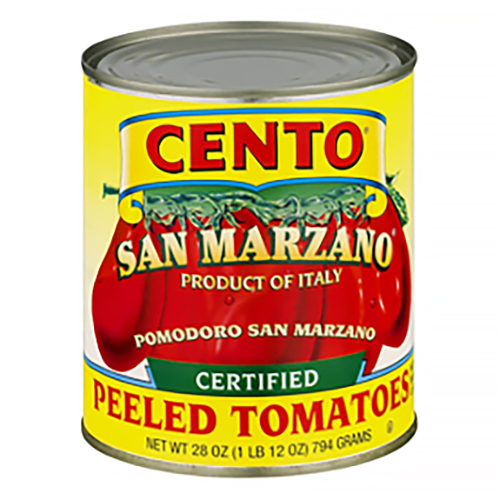Family-favorite recipes with a side of memories
Pass it down
By Lisa Zaslow Segelman
What does a nice Jewish girl like me “know from gravy” (as my grandmother would put it)? Not a lot. My grandmom on my father’s side, Tillie Zaslow, arrived in Philadelphia in 1913. She made “tomato sauce” with ketchup because it said tomato on the label, and she thought it would work on her “lokshen”, the Yiddish word for noodles.
My mother, however, grew up in South Philly on Dickenson Street. She and her mom, my grandma Dora, would take the 4-minute walk to the 9th Street Italian market to peer at meats and cheeses that weren’t kosher but created quite a fuss amongst the shoppers. The two of them knew about things like pro-shoot (prosciutto), mut-za-dell (mozzarella) and gabagool (capicola). More than 80 percent of Italian Americans today can trace their roots to the southern half of Italy. Their particular dialect is known for drawn-out vowels and dropped consonants. Even though every Italian word ends in a vowel, that “ain’t necessarily so” for the descendants of southern Italians.
Sauce in Italian is “salsa” or “sugo”, but eventually Sunday gravy became the English name for a traditional Italian American meat dish/sauce that is still wildly popular.
So what’s the difference between Italian sauce and Sunday gravy?
Italian sauce is tomato-based and finds its way into pizza, pasta, and meat/chicken dishes. Cooks choose their ingredients, which usually include tomatoes, olive oil, garlic, onions, herbs (such as basil and oregano), and sometimes additional ingredients like carrots or bell peppers. It can be simple and vegetarian, or include meatballs or sausage.
Sunday gravy, however, is all about the meat. It usually includes a combination of meats like meatballs, braciole (stuffed and rolled meat), sausage and pork ribs.
It’s thought that Sunday gravy originated from a beef stew cooked in the 12th through 14th centuries, long before tomatoes were introduced from the New World. The stew was cooked in a clay pot for hours and hours. The dish was mainly prepared on Sundays, and the sauce was poured over pasta. The meat was served as a second course.
This stew became a ragu (hearty Italian pasta sauce). By the 18th century, it was being made with the best meats for the noble courts.
Throughout the 20th century, Sunday gravy continued to evolve as Italian Americans adapted to the ingredients and tastes native to the U.S. When it came down to the reality of the home cook’s kitchen, however, the distinction between Sunday gravy and Italian sauce began to blur.

“My mom called it gravy, but some people call it Sunday sauce,” says Michael Stanbach of Cape May who grew up in South Philly on 11th and Reed streets, an area his mother called “the heart of South Philly.”
Some folks are tired of the argument: sauce, Sunday sauce, or Sunday gravy. Reddit has a robust discussion about this. They can’t agree on what to call it, but most agree that it’s a NY/PA/NJ term, with some Bostonians in on the fun. They all say that it’s a delicious part of their family traditions.
When Michael was 5 years old in 1961, his aunt Marleen would come over every Friday night and begin making the gravy with his mom, Amelia “Molly” Di Ritis Stanbach, born in South Philly in 1916, the daughter of Italian immigrants. Most of Molly’s recipes were passed down from her mother, and she kept them neatly in her head (which her family called her cranial Rolodex).
“The unique thing about my mom was that she just had to share her cooking with the entire neighborhood — and I’m not talking about the recipe, but the gravy itself,” says Stanbach.
“By midday Sunday, people would come from blocks away, stand at the door of my mother’s kitchen, and she would ladle the gravy into their containers. I guess it was the start of the Tupperware craze, so everyone came prepared. Not a great idea as tomato sauce stains Tupperware like nothing else,” adds Stanbach.
Michael’s mom died at 58 years old on New Year’s Day in 1978, taking many of her recipes with her and leaving an empty kitchen.
“After my mom was gone, my dad and I had this big green cookbook from the 1940s,” says Stanbach. “He and I would make meatballs, sausage, and other Italian favorites together. These were good times.”
Michael’s father gave the cookbook to a friend when his pal started cooking at a local restaurant in the 1980s. When his cook-friend recently attended a wedding in Cape May, he brought the cookbook with him. It had olive oil and tomato stains on it, but indelible memories in it.
“My mom wasn’t a career woman; those opportunities were before her time,” says Stanbach, “but I’m so gratified that now over 60 years later, my mom Molly is getting some recognition for her talents and her generosity. The whole neighborhood adored her and her Sunday gravy. Even if some people call it Sunday sauce, this delicious dish all goes down the same…with a whole lot of love.”

Molly’s Sunday gravy recipe
Cook time: 3 hours or more, your choice
Sauce ingredients:
- One-fourth cup extra virgin olive oil, more as needed
- 1 large onion, chopped
- 1.5 pounds of pork pieces or pork spareribs
- 1 pound of veal stew meat
- 1.5 pounds of hot or sweet Italian sausage
- 5 tablespoons of tomato paste
- 4 cans of San Marzano (if possible) peeled Italian tomatoes, pureed or chopped, your choice
- One-third cup of red wine
- 5 cups of water
Meatballs ingredients:
- 1.5 pounds of ground beef (or a combination of beef, pork, and veal)
- Three-fourths cup plain or seasoned breadcrumbs
- 3 eggs
- 2 teaspoons of minced garlic
- One-fourth cup chopped Italian flat-leaf parsley
- One-half teaspoon of salt
- One-fourth of a teaspoon pepper
- Three-fourths cup of freshly grated Romano or parmesan cheese
Pasta ingredients:
Serve over 1 pound of cooked pasta.
Sauce directions:
Heat the oil in a large pot over medium heat. Add patted dry pork pieces/spareribs and cook until nicely browned, about 15 minutes. Transfer the pork to a plate and repeat with the veal, then the sausages, adding a little more olive oil as necessary, transferring all meats to a plate as you go. Add in the garlic, then cook for one minute and discard. Drain the pot of most of the fat and cook the onion until soft. Add in tomato paste and cook for a minute, then add the tomatoes and red wine. Pour in the water and add salt and pepper to taste. Cook for 2-3 hours.
Meatballs directions:
Combine meat, breadcrumbs, eggs, garlic, and parsley. Mix well. Heat the oil and shape the mixture into 2-inch balls. Brown on all sides and transfer to a plate or bowl. After the sauce has simmered on low for 2-2.5 hours, add in the meatballs and cook 30 minutes more until the meats are soft and tender. Remove the meats from the sauce and set aside.
Serving directions:
Serve over 1 pound of cooked pasta and serve with freshly grated parmesan or Romano cheese. Meats can be served with the pasta, as a second course, or the next day.
Lisa is an advertising copywriter (think ‘Madmen’ without the men), journalist and columnist. Claim to fame: Lou’s waitress for four teenage summers. For column comments, story ideas, or to get on her “quote” list for future columns: redshoeslzs@gmail.com














